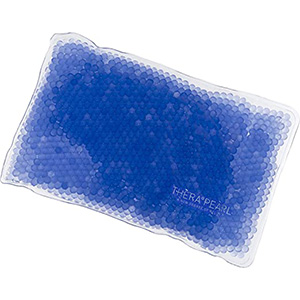Vasectomy is a safe and highly effective surgical procedure for permanent contraception. It’s estimated up to 500,000 men have a vasectomy in the US every year.1 However, when undergoing a medical procedure – especially an elective one, it’s important to be aware of the risks and potential complications that could occur immediately after the surgery and later in life.
Possible short-term complications
It’s not uncommon to feel sore and experience some level of swelling, bruising, and pain after the surgery. These symptoms are temporary and will usually subside within a week. Post-op discomfort can be reduced by taking adequate care of yourself during the recovery period.
Suggested readingBruising & swelling
Most men will develop some level of bruising and swelling after their procedure. It doesn’t always happen immediately – it often happens after a few days but, in most cases, has mostly disappeared after two weeks.
Suggested readingBleeding
Frequently blood may ooze under the skin, so that penis and scrotum appear bruised. If there is no dangerous swelling this often painless problem usually disappears without treatment within a week or two.
Suggested readingHematoma
A hematoma is bleeding inside the scrotum that leads to a large collection of clotted blood and can cause painful swelling. Medical advice should be sought. Typically occurs in 2% of cases, and maybe slightly higher in the incisional technique compared to no-scalpel procedures.23 The experience of the surgeon is an important factor, as the rate of hematoma is affected by the number of vasectomies the physician performs in a year:4
- 4.6% with 1-10 vasectomies per year
- 4% with 11-50 vasectomies per year
- 1.6% with over 50 vasectomies per year
Infection
Postoperative infection incidence ranges from 1.3-4% for the incisional method, risk is reduced with the no-scalpel method (0.2-0.9%).3 Experience of the surgeon, or the number of vasectomies performed per year seems to have little effect on the statistics. Antibiotics are usually used to treat infections.4
Blood in the ejaculate
This is pretty rare, but it does happen. It may typically happen anytime during the first couple of weeks and appears as brownish sludge. Normally it will clear after a few ejaculations. If not, then contact your doctor.
Suggested readingAllergic reaction to anesthesia
A few men will develop itching and hives due to an allergic reaction to anesthesia.
Allergy to chromic sutures
This is quite rare but worth mentioning. The material used to sew up the incision after many surgical procedures (including vasectomy) is known as “Surgical Gut”, and is derived from the small intestine of healthy sheep. It’s fine-grained, has great tensile strength and elasticity. By tanning it in varying amounts of salt of chromic acid, the delay time for tissue absorption is set. Some people are allergic to Chromic acid.
Reactions to this material are difficult to diagnose post-operatively. They may be interpreted as non-specific complications of surgery. One site visitor reports that he was still experiencing very aggravating stinging/burning/itching pain at the incision sites 10 days after his vasectomy, and his doctor diagnosed this as an allergy to the sutures. Time as ever is the great healer.
Recommended products for recovery
We only recommend products we think are useful for our readers. If you make a purchase, we may earn a small commission. JockstrapsPapi Men’s Cotton Jock Strap 3-Pack
JockstrapsPapi Men’s Cotton Jock Strap 3-Pack Ice packsTheraPearl Ice Pack with Gel Beads
Ice packsTheraPearl Ice Pack with Gel Beads Home Vasectomy TestSpermCheck Vasectomy Test Kit
Home Vasectomy TestSpermCheck Vasectomy Test Kit Donut-shaped pillowErgonomic Innovations Orthopaedic Seat
Donut-shaped pillowErgonomic Innovations Orthopaedic Seat
Possible long-term complications
There has been extensive research done on the long-term health effects of a vasectomy. While major complications are very rare, it is possible to experience more severe difficulties after a vasectomy.
Sperm granuloma
Granulomas (an inflammatory reaction to leaking sperm) typically occur in the second or third week after a vasectomy in 15%-40% of men, however, are troublesome in only 2%-3% of cases. Most sperm granulomas are small and asymptomatic (the patient doesn’t know they are there), and resolve themselves over time.4
Painful granulomas that don’t heal on their own will usually be treated with an injection of steroids, or in rare cases, the inflamed granuloma will be surgically removed. It’s estimated less than 1% of problematic granulomas require surgery, the majority of them can be resolved with conservative treatment.5
Suggested readingCongestive epididymitis
Congestive epididymitis is an inflammation of the epididymis, which causes pain and testicular tenderness. The overall incidence is 0.4%-6.1%. May occur in the first year post-op, and is usually treated with analgesics and antibiotics. Typically clears up within a week with treatment, but in some cases, it can take longer. It’s very rare for congestive epididymitis to last beyond a year.4
Antisperm antibodies (ASA’s)
Antisperm antibodies are present in all men and women, but not necessarily at detectable levels. A vasectomy may break the blood-testis barrier, which triggers the immune system to mistakenly produce more antisperm antibodies to fight sperm. Between 25% to 60% of men develop an increase in detectable sperm-immobilizing antibodies after a vasectomy.6 Genital tract, infections, orchitis, or prior STDs will increase the risk.4 Antisperm antibodies can make it harder to conceive a child even after a successful vasectomy reversal.
Negative psychological effects
It’s not uncommon for men to go through a brief period of self-consciousness. Some men keep their operation a secret because they believe that the operation is tainted by the stigma of emasculation and thinking it would degrade them in the eyes of their friends. Normally, this period passes quickly. A small percentage of men experience depression and angry emotions. Some experience a period of mourning over the loss of their ability to reproduce. These feelings usually resolve given time.
A very small percentage of couples experience adjustment difficulties. The emotional distress manifests in sexual dysfunction, impotence, or premature ejaculation. A vasectomy might be the catalyst but is rarely the cause.67
Suggested readingProstate cancer
Concern that a vasectomy could increase the risk of prostate cancer broke out in the early 90s. However, despite over 30 years of extensive research, there is still an ongoing debate about whether vasectomy is associated with prostate cancer.
In 2017, a large systematic review and meta-analysis by Mayo Clinic researchers found no association between vasectomy and high-grade, advanced-stage, or fatal prostate cancer.8
In 2019, a study in the Journal of the National Cancer Institute associated vasectomy with a small but statistically significant risk of prostate cancer. The absolute increased risk was found to be similar to the breast cancer risk for women using contraceptive pills.9
Post-vasectomy pain syndrome (PVPS) or chronic testicular pain (CTP)
A small percentage of men do suffer what is known as “Post Vasectomy Pain syndrome” (PVPS). This is a collective title for any long-term problem relating to vasectomy – not a disease or syndrome in its own right. The accepted definition is where problems remain unresolved after a period of three months or more.
The incidence of PVPS is difficult to estimate due to the diversity of the condition and the lack of large-scale studies. The American Urological Association (AUA) estimates 1–2% of men who undergo a vasectomy, will require treatment for chronic scrotal pain.1
The most common cause of PVPS is chronic congestive epididymitis.10 In some men, an immunological reaction of anti-sperm antibodies can also give rise to the symptoms. Chronic orchialgia happens in approximately 1% of cases. This is a dull ache in testicles due to the congestion of dead sperm. It usually disappears within 6 months.7
Treatment options are dependent on the exact symptoms. As explained earlier, the condition known as PVPS is a collection of various symptoms and causes – many of the common urological conditions. Doctors will generally initially adopt conservative treatment measures including antibiotics and painkillers.
If the problem is not resolved by conservative treatments, then there are several surgical options – depending on the symptoms. Vasectomy reversal has success rates ranging from 50-70% 1112, but rates of up to 84% have been reported.13 This tends to be the most general approach. Epididymectomy (removal of the epididymis) has a success rate of up to 90% but requires a more specific diagnosis.14 Microsurgical denervation has a success rate of up to 96% in meticulously selected cases.15
Suggested readingSummary
As with any surgical procedure, there are risks involved with a vasectomy. However, for most men, a vasectomy doesn’t cause any significant side effects or pain beyond the post-op discomfort during the recovery period, and severe complications are very rare.
If you have concerns regarding a vasectomy, consult with your doctor and address them before the operation.
References and further reading
Vasectomy-Information.com has a strict sourcing policy. We rely on evidence-based medicine, peer-reviewed studies, reputable clinical journals, and medical associations. Learn more about how we ensure our content is accurate and up-to-date by reading our editorial policy.- Sharlip I, Belker A, Honig S, et al. Vasectomy: AUA guideline. J Urol. 2012;188(6 Suppl):2482-2491. doi:10.1016/j.juro.2012.09.080
- Adams CE, Wald M. Risks and Complications of Vasectomy. Urologic Clinics of North America. Published online August 2009:331-336. doi:10.1016/j.ucl.2009.05.009
- Cook L, Pun A, Gallo M, Lopez L, Van V. Scalpel versus no-scalpel incision for vasectomy. Cochrane Database Syst Rev. 2014;(3):CD004112. doi:10.1002/14651858.CD004112.pub4
- Schwingl PJ, Guess HA. Safety and effectiveness of vasectomy. Fertility and Sterility. Published online May 2000:923-936. doi:10.1016/s0015-0282(00)00482-9
- McDonald S. Vasectomy review: sequelae in the human epididymis and ductus deferens. Clin Anat. 1996;9(5):337-342. doi:10.1002/(sici)1098-2353(1996)9:5%3C337::aid-ca7%3E3.0.co;2-9
- Barone MA, Pollack AE. Long-Term Risks of Vasectomy. GLOWM. Published online 2009. doi:10.3843/glowm.10409
- Vasectomy and Vasovasostomy (Reversal Surgery). Well-Connected reports. Harvard Medical School. September 2001.
- Bhindi B, Wallis CJD, Nayan M, et al. The Association Between Vasectomy and Prostate Cancer. JAMA Intern Med. Published online September 1, 2017:1273. doi:10.1001/jamainternmed.2017.2791
- Husby A, Wohlfahrt J, Melbye M. Vasectomy and Prostate Cancer Risk: A 38-Year Nationwide Cohort Study. JNCI: Journal of the National Cancer Institute. Published online May 23, 2019. doi:10.1093/jnci/djz099
- Manikandan R, Srirangam SJ, Pearson E, Collins GN. Early and late morbidity after vasectomy: a comparison of chronic scrotal pain at 1 and 10 years. BJU Int. 2004;93(4):571-574. doi:10.1111/j.1464-410x.2003.04663.x
- Hendry WF. Vasectomy and vasectomy reversal. Br J Urol. 21994;73(4):337-344. doi:10.1111/j.1464-410x.1994.tb07592.x
- Sharlip ID. What is the best pregnancy rate that may be expected from vasectomy reversal?. J Urol. 1993;149(6):1469-1471. doi:10.1016/s0022-5347(17)36417-0
- Myers S, Mershon C, Fuchs E. Vasectomy reversal for treatment of the post-vasectomy pain syndrome. J Urol. 1997;157(2):518-520. https://www.ncbi.nlm.nih.gov/pubmed/8996346
- West A, Leung H, Powell P. Epididymectomy is an effective treatment for scrotal pain after vasectomy. BJU Int. 2000;85(9):1097-1099. doi:10.1046/j.1464-410x.2000.00656.x
- Heidenreich A, Olbert P, Engelmann U. Management of chronic testalgia by microsurgical testicular denervation. Eur Urol. 2002;41(4):392-397. doi:10.1016/s0302-2838(02)00023-4
- Sinha V, Ramasamy R. Post-vasectomy pain syndrome: diagnosis, management and treatment options. Transl Androl Urol. 2017;6(Suppl 1):S44-S47. doi:10.21037/tau.2017.05.33
- Vasectomy (male sterilisation). NHS. Published February 22, 2018. https://www.nhs.uk/conditions/contraception/vasectomy-male-sterilisation/
- Vasectomy. Mayo Clinic. Published February 14, 2019. https://www.mayoclinic.org/tests-procedures/vasectomy/about/pac-20384580
- Zhao K, Wu L, Kong X, et al. Long-term safety, health and mental status in men with vasectomy. Sci Rep. Published online October 24, 2018. doi:10.1038/s41598-018-33989-5